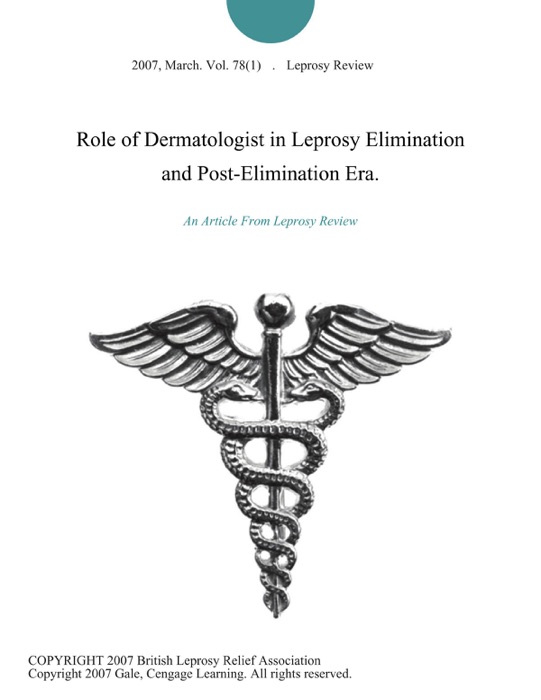[Download] ~ Role of Dermatologist in Leprosy Elimination and Post-Elimination Era. * by Leprosy Review ~ Book PDF Kindle ePub Free

eBook details
- Title: Role of Dermatologist in Leprosy Elimination and Post-Elimination Era.
- Author : Leprosy Review
- Release Date : January 01, 2007
- Genre: Health & Fitness,Books,Health, Mind & Body,
- Pages : * pages
- Size : 184 KB
Description
India is a country where leprosy has been endemic for many decades. There is no doubt that due to concerted efforts of dedicated dermatologists and leprologists, (1,2) it has been possible to reach the target of elimination in the year 2005. (3) In India, leprosy services have been delivered through specialized vertical setup for about 50 years. (4) However, in the post-elimination era, with a low prevalence of disease, as a part of the global strategy, leprosy services have been integrated within the existing vast infrastructure of the General Health System (GHS). This is now the well-accepted strategy to provide leprosy services in a cost effective, equitable and sustainable manner. (5,6) In the Indian scenario, it means availability of diagnosis and management up to Primary Health Centre (PHC) level and MDT availability for treatment continuation up to Sub Centre (SC) level, on all working days of the week. (7) In this setup, PHC Medical Officers who are to undertake diagnosis and treatment initiation, play a very crucial role. It has also been well realized that even after elimination for many years to come, new leprosy cases will keep coming as disease transmission is still a continuing process in the community. (8-10) Now the question is, are our Medical Officers capable and confident in diagnosing the leprosy cases without much supervision and support, just by undergoing a short training of 3 days? Although the diagnosis and treatment criteria have been very simplified and standardized, (11) our experience tells us that a large proportion of cases are still wrongly diagnosed (12) or missed by the PHC medical officers. (13) This is mainly due to the inherent characteristics of the disease. We know that just absence of cardinal signs does not rule out the possibility of leprosy, considering further the varied and many times atypical presentation of cases. (14-16) Leprosy is a great mimic and confuses many times even the experienced leprologist. (16,17) Many cases present only with nerve involvement. (18,19) Few others are more prone to silent nerve damage. Then there are problems of lepra reactions and unusual drug reactions, (20,21) where views of trained dermatologist carry utmost importance. Treatment of the disease is also an enigma. (16) Although we have fixed duration multidrug therapy (FD-MDT), many cases still require review and judgment at regular intervals from an expert.